5000
Type of resources
Available actions
Topics
INSPIRE themes
Keywords
Contact for the resource
Provided by
Years
Formats
Representation types
Update frequencies
status
Scale
-
L’île de Bagaud, réserve intégrale du Parc National de Port Cros (PNPC), fait actuellement l‘objet d’un programme décennal de restauration écologique en vue de la préservation de son patrimoine naturel. Cette restauration consiste à contrôler deux espèces exotiques envahissantes : le rat noir (Rattus rattus) et la griffe de sorcière (Carpobrotus sp.). Débuté en 2010, ce programme permet l’étude de plusieurs groupes taxonomiques avant (2010-2011) et après contrôle (2013-2019) : (1) la flore, (2) les arthropodes épigés et les insectes volants, (3) les squamates, (4) les oiseaux terrestres nicheurs et (5) les oiseaux marins nicheurs. Ce projet fédère une large communauté d’acteurs académiques et non-académiques autour d’un objectif commun : contrôler et si possible éradiquer les espèces invasives de la réserve intégrale et suivre la résilience des groupes taxonomiques cités ci-dessus. Partenaires pour le suivi et l’analyse des données : IMBE, PNPC, CBNMed, association Reptil’Var, association DREAM et LPO. Autres partenaires : PIM, INRA, Conservatoire du Littoral, Domaine du Rayol, Naturoscope, UE, Natura2000, TLV, Région Sud, Naturalia Consultants en Environnement.
-
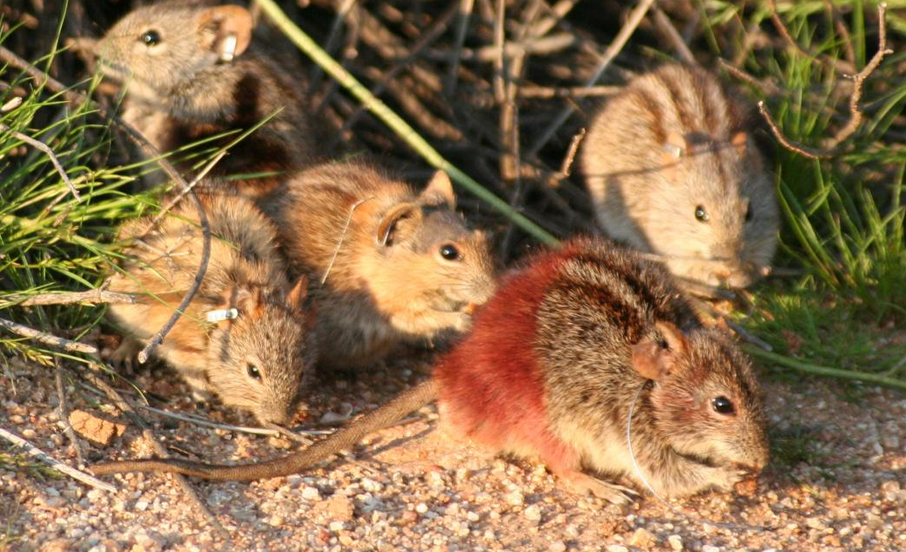
Suivi longitudinal sur 9 sites de terrain au Sénégal de l’observatoire ObsMiCE Paramètres mesurés: - détermination spécifique ; - indices d’abondance ; - données morphométriques, - estimation de l’âge, - paramètres de reproduction indicateurs de la dynamique des populations animales ; - prélèvements de tissus, d’ectoparasites et d’endoparasites ; - données environnementales ; - prévalence de parasites et pathogènes
-

In the framework of the SNO/SOERE MOOSE (Mediterranean Ocean Observing System on Environment https://www.ir-ilico.fr/Les-reseaux-elementaires/Fiches-d-identite-des-reseaux-elementaires/MOOSE ) program, the Mediterranean Institute of Oceanography is operating coastal High Frequency Surface Wave Radars (HF radar) on the North Western Mediterranean coast. This activity is also supported by the following European Research Infrastructure Jerico-Next (https://www.jerico-ri.eu), and Intereg MED programs as Impact and Sicomar +. HF radar provide high resolution (3-5 km), synoptic view of surface currents from the shore up to 80 km off shore at hourly time scales. The measurement principle is based on the Doppler effect created by an additional current on the intrinsic speed of the waves selected by radar-sea interactions, called Bragg waves, having a wavelength of half that of the radar e.m. waves and propagating in the axis of observation (radial currents). A single radar scans the sea in azimuth and determines the radial components of the current at each adjacent cell along each azimuth. Two separate radars for the same area from different angles then collect the information necessary for mapping vector current from the combination of the two sets of radial components. The HF radar data set is made of monthly averaged surface currents, geo-referenced on cartesian lon/lat coordinates. The radial velocities maps are provided applying a Direction Finding technique (instead of traditional Beam Forming) not only to the full array of antenna but also to subarrays made of a smaller number of sequential antennas, a method which we refer to as "antenna grouping". Radials from Peyras-Peyras and Porquerolles-Benat are computed to reconstruct the vector field.
-
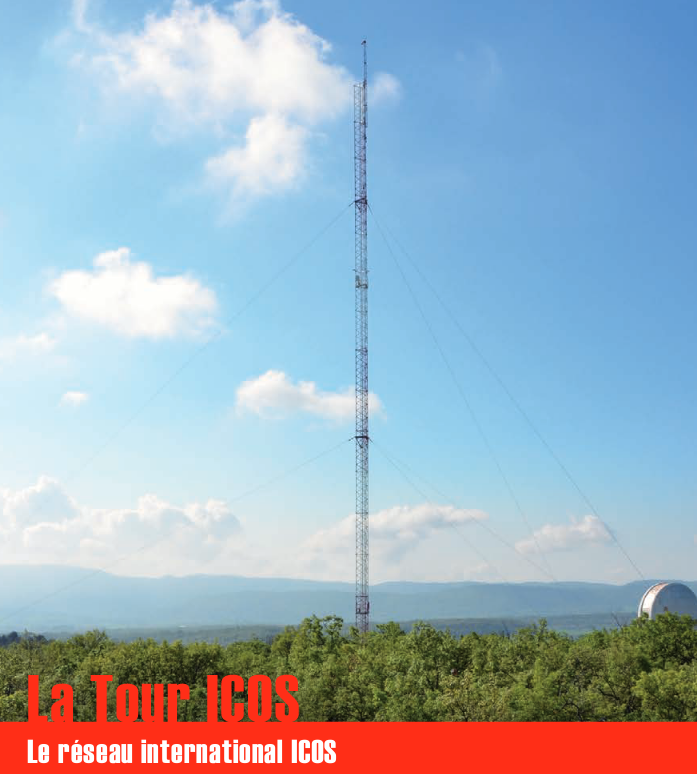
Une infrastructure de recherche européenne de mesure des concentrations atmosphériques des gaz à effet de serre et des flux de carbone sur les écosystèmes et l’océan. La tour ICOS (pour Integrated Carbon Observation System) installée à l'Observatoire de Haute Provence (OHP), haute de 100 m est une antenne régionale du dispositif permettant d’étudier la place de la forêt méditerranéenne dans le bilan de carbone. Elle est équipée d’instruments à trois niveaux (10, 50, 100 m). Le réseau est doté de 3 types de stations réparties sur le territoire : continentales, côtières et de montagne. Chacune de ces stations mesure les paramètres suivants : * température, direction et vitesse du vent, pression atmosphérique, humidité * CO2, CH4, CO, H2O * hauteur de couche limite atmosphérique (lidar) Les objectifs scientifiques de ce programme européen sont de : * tracer les flux de carbone en Europe et dans les régions adjacentes par observation des écosystèmes, de l'atmosphère et des océans à travers des réseaux intégrés, * fournir les observations à long terme nécessaires pour comprendre l'état présent et prévoir le comportement du carbone global et des émissions des gaz à effet de serre, * surveiller et évaluer l'efficacité de la séquestration du carbone et/ou de la réduction des émissions de gaz à effet de serre sur la composition globale de l'atmosphère, en prenant en compte les sources et les puits par région géographique et par secteur d'activité. L'infrastructure ICOS permet d'accueillir des chercheurs pour des campagnes de recherches
-

The Health and Demographic Surveillance System (HDSS) in Niakhar, a rural area of Senegal, is located 135 km east of Dakar. This HDSS has been set up in 1962 by the Institut de Recherche pour le Développement (IRD) to face the shortcomings of the civil registration system and provide demographic indicators. Some 65 villages were followed annually in the Niakhar area from 1962 to 1969. The study zone was reduced to eight villages from 1969 to 1983, and from then on the HDSS was extended to include 22 other villages, covering a total of 30 villages for a population estimated at 45,000 in December 2013. Thus 8 villages have been under demographic surveillance for almost 50 years and 30 villages for 30years. Vital events, migrations, marital changes, pregnancies, immunization are routinely recorded (every four months). The database also includes epidemiological, economic and environmental information coming from specific surveys. Data were collected through annual rounds from 1962 to 1987; rounds became weekly from 1987 to 1997; routine visits were conducted every three months between 1997and 2007 and every four months since then. The current objectives are 1) to obtain a long-term assessment of demographic and socio-economic indicators necessary for bio-medical and social sciences research, 2) to keep up epidemiological and environmental monitoring, 3) to provide a research platform for clinical and interdisciplinary research (medical, social and environmental sciences). Research projects during the last 5 years are listed in Table 2. The Niakhar HDSS has institutional affiliation with the Institut de Recherche pour le Développement (IRD, formerly ORSTOM). * Niakhar HDSS INDEPTH Core Dataset 1984-2016 (Release 2018). Provided by the INDEPTH Network Data Repository. http://indepth-ishare.org/index.php/catalog/132 * DOI : 10.7796/INDEPTH.SN013.CMD2016.v1 * https://doi.org/10.7796/INDEPTH.SN013.CMD2016.v1
-
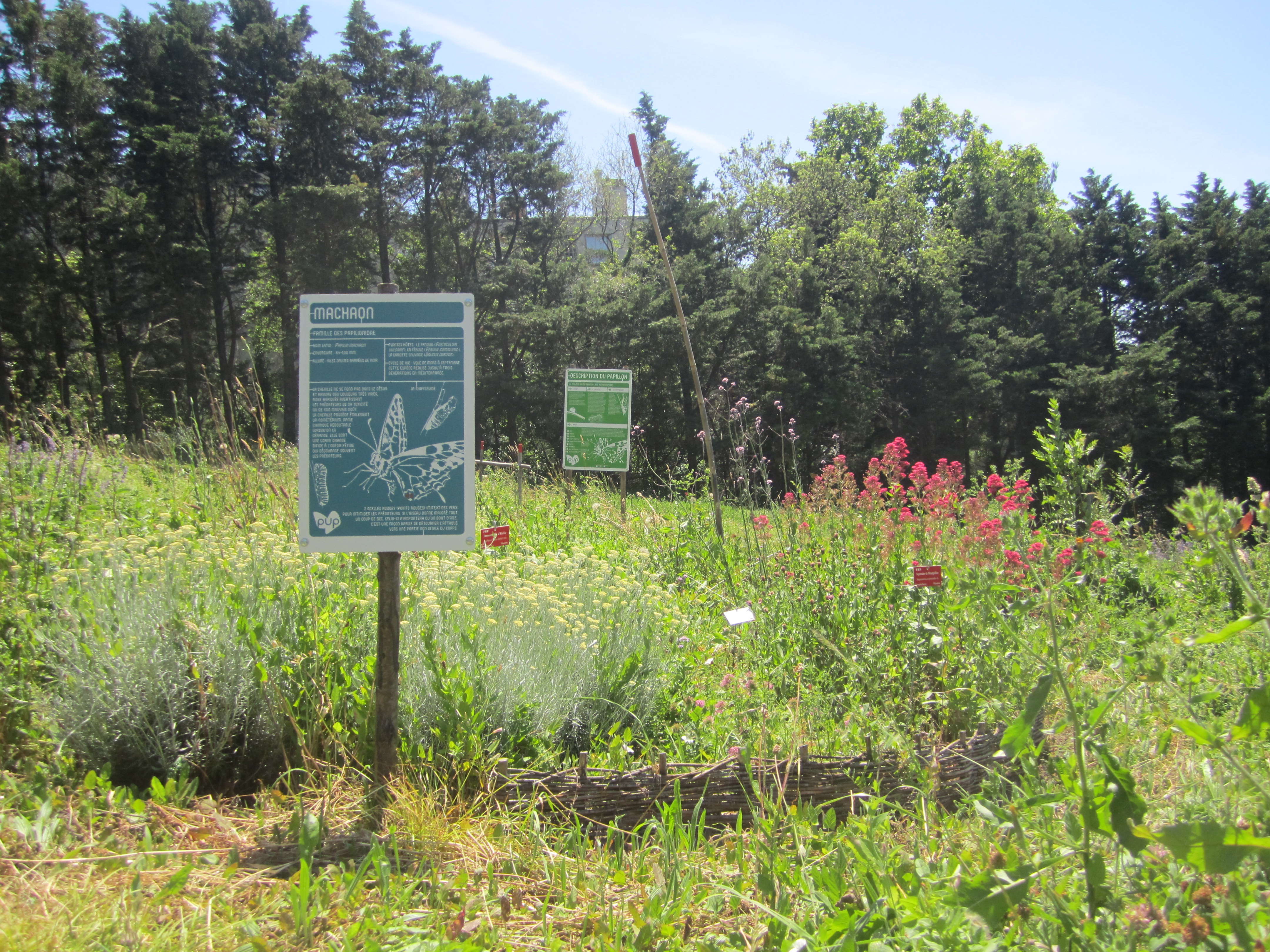
Communities of Rhopalocera (Lepidoptera) butterflies in 24 urban parks in Marseille Sampling of Rhopalocera communities: 7 to 12 transects in each of 24 urban parks in Marseille every 2 years since 2008. Increasing numbers of cities are currently developing sustainable policies aimed at promoting urban biodiversity and ecological dynamics through the planning of green networks and the implementation of more sustainable management practices. These human activities can strongly influence environmental factors on which the organization of ecological communities at different scales depends. Thus, it is of fundamental importance to understand the relative impact of local management, green space design and landscape features on the distribution and the abundance of species in urban areas. On the basis of 2 years of butterfly surveys in urban public parks within an extensive Mediterranean metropolitan area, Marseille (South-East France), the aim of this paper is to provide a better understanding of the effect of these three environmental scales (plot, park, landscape) on the composition and organization of species assemblages. Using variation partitioning and nestedness analysis on ecological data aggregated at plot-level and park-level respectively, we demonstrate the preponderant effect of landscape scale features on urban butterfly assemblages. Our results also highlight an important co-variation of plot management, park layout and urban landscape features, in their interaction with the community structure of urban butterflies. Although there is no significant species-area relationship, significantly nested patterns arise in species composition. Selective colonization appears as a driving force constraining the constitution of species assemblages within the city. However, a prospective study on adjacent more natural areas suggests that biotic limitations, interspecific competition and habitat filtering may play an important role if a larger portion of the urbanization gradient is explored, which remains to be investigated.
-

As part of the EUREC4A-OA project (H. Bellenger, S. Speich, LMD), which is the French oceanographic component of the larger EUREC4A field experiments, the “flux mast” national instrument was installed on the Reseach Vessel R/V Atalante from Genavir. The flux mast holds instruments that measure atmospheric turbulence and meteorological variables. The collected data are used to estimate the turbulent fluxes of momentum and heat at the air-sea interface. Specifically, the flux mast instruments measure air pressure, air temperature, humidity, air refraction index, H2O, the three components of the wind vector, and the upward and downward solar and infrared radiation fluxes. The fluxes calculated are the latent and sensible heat fluxes, and the friction velocity. DOI : https://www.seanoe.org/data/00661/77341/
-
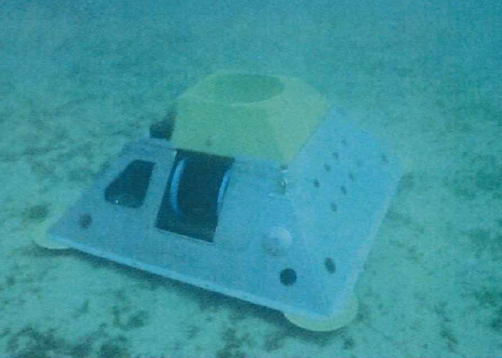
JULIO (Judicious Location for Intrusions Observations) mooring is located close to the 100 m-deep isobath (around 5.25°E and 43.13°N), offshore Marseille. With its bottom-moored (300kHz) ADCP, it enables measuring horizontal currents (every 4 m and every ½ h) through the water column, and among others, identifying periods of exchange between the Northern Current and the continental shelf. It is one crucial component in the study of the coastal-offshore gradient from Marseille to the MOOSE 42°N5°E station, and potential covariances with the MIO radar and other MIO or international observing systems, as well as with the SOMLIT site (including also an ADCP) in the bay of Marseille. Moreover, with a bottom CTD, it can detect environmental anomalies in classical hydrographic data, useful for oceanographers. As one of the rare station at the interface between the continental shelf and offshore, it will allow to observe the long-term evolution of the Northern Current in the context of climate change and anthropogenic pressure, and its potential varying impact on the Gulf of Lion. The data are of course also crucial for modellers. Moreover they show a great potential when supplementing other MOOSE data (glider and radar). Timeserie #4 : - JULIO 4 - 07/12/2020 to 31/08/2021; JULIO (Judicious Location for Intrusions Observations) est situé à proximité de l'isobathe de 100 m de profondeur (environ 5,25°E et 43,13°N), au large de Marseille. Grâce à son ADCP (300 kHz), il permet de mesurer les courants horizontaux (tous les 4 m et toutes les ½ h) à travers la colonne d'eau et, entre autres, d'identifier les périodes d'échange entre le courant du Nord et le plateau continental. Il s'agit d'un élément crucial dans l'étude du gradient littoral-offshore de Marseille à la station MOOSE 42°N5°E, et des covariances potentielles avec le radar MIO et autres systèmes d'observation MIO ou internationaux, ainsi qu'avec le site SOMLIT (incluant également un ADCP) dans la baie de Marseille. De plus, avec un CTD de fond, il peut détecter les anomalies environnementales dans les données hydrographiques classiques, utiles aux océanographes. En tant qu'une des rares stations à l'interface entre le plateau continental et le large, elle permettra d'observer l'évolution à long terme du courant du Nord dans le contexte du changement climatique et de la pression anthropique, et son impact potentiel variable sur le Golfe du Lion. Les données sont bien sûr également cruciales pour les modélisateurs. De plus, ils présentent un grand potentiel en complément d'autres données MOOSE (planeur et radar). Série temporelle #4 : - JULIO 4 - 07/12/2020 to 31/08/2021;
-
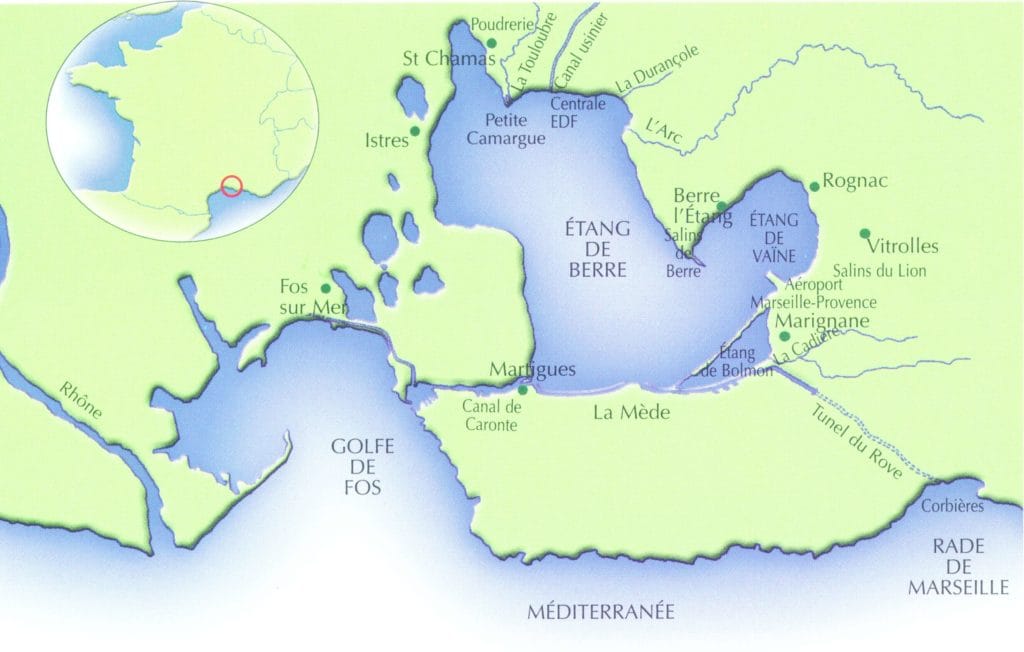
L’Observatoire du milieu porté par le GIPREB (Groupement d’Intérêt Publique pour la Réhabilitation de l’Etang de Berre) a pour vocation de suivre depuis 1994 l’évolution hydrologique et biologique de l’étang de Berre (France, Méditerranée) Profils mensuels en 10 stations de l’étang de Berre ======================================= * Paramètres : O2 (µg/l), O2 % sat, Salinité, T°C, Turbidité, pH * Date de début de la série : juin 1994 * Protocole : Sonde multiparamétrique * Opérateur : GIPREB Autres données HF disponibles au point H12 : Oxygène, Salinité, Température au milieu-fond-surface depuis 2020
-

The GeoKarla dataset gathers geophysical and petrophysical data acquired over the Karla impact structure (Tatarstan, Russia). In September 2019, a field campaign on this eroded and buried structure was performed. Magnetic and gravity field observations were done, as well as geological mapping and sampling. Further petrophysical analyses in laboratory were performed on rock samples. All these data reveal - for the first time - a clear but unusual geophysical signature of the Karla impact structure. ==== acknowledgements ====== The associated research project was funded by: Russian Foundation for Basic Research RFBR grant no.18-55-5014 CNRS PRC French program Institutes/Participants: * Aix-Marseille Université, CNRS, IRD, INRAE, Aix-en-Provence, France Quesnel, Y., Rochette, P., Gattacceca, J., Uehara, M. * Institute of Geology and Petroleum Technologies, Kazan Federal University, 4/5 Kremlyovskaya Str., 420008, Kazan, Russia Bezaeva, N.S., Kuzina, D.M., Nasyrtdinov, B.M. * V.I. Vernadsky Institute of Geochemistry and Analytical Chemistry, Russian Academy of Scences, 19 Kosygin str., 119991 Moscow, Russia Bezaeva, N.S. , Badyukov, D.D. * Institute of Physics and Technology, Ural Federal University, 19 Mira Str., 620002 Ekaterinburg, Russia Bezaeva, N.S. Chareev, D.A. * Institute Experimental Mineralogy, Russian Academy of Science, 4 Academician Osipyan Str., 142432 Chernogolovka, Moscow Region, Russia Chareev, D.A. * National University of Science and Technology “MISiS”, 4 Leninsky Prospekt, 119049 Moscow, Russia Chareev, D.A. * Université de Montpellier, CNRS, Géosciences Montpellier, France Champollion, C.
 OSU Pytheas - Data Catalog
OSU Pytheas - Data Catalog